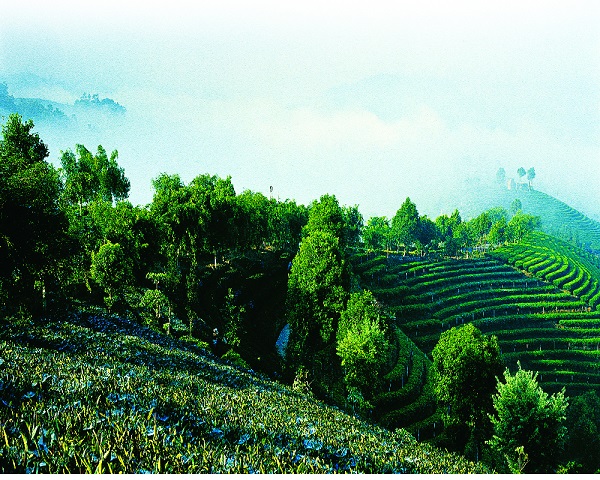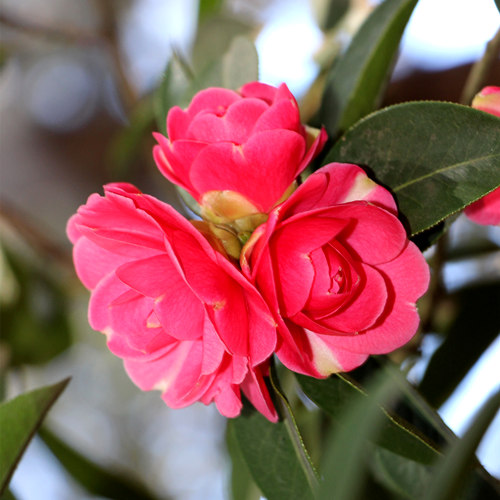
10 Ancient Towns in Dali
1. Dali Ancient City
Dali Ancient City is also called Yeyu or Purple City, dating back to Tianbao Period in the Tang Dynasty, with Yangxiemie City (a place near Xisan Tower) as the new capital of Nanzhao Kingdom. The ancient city was built in the 15th year of Hongwu Period in the Ming Dynasty (AD 1382). It covers the area 6 km around with a 8.30-meter-high and 6.7-meter-thick city wall. It has four gates in the east, west, south and north separately, each gate has a tower and there is a watchtower at each corner. The walls were destroyed in the early days after liberation. In 1982 the south gate was rebuilt, the "Dali" characters on the south gate was a calligraphy work of Guo Moruo. Walk into the city from the south gate, step on the Fuxing Road direct to the north gate, you will find stores along the bustling streets, selling marbles, tie-dye products and other ethnic handicrafts and jewelry. Some old curtilages remain their look in the old days, with flowers and trees in the courtyard, birdsong in the air and flowing streams outside the house. It is the scene of "one well for three families, several flower pots for one family".




▲Dali Ancient City
Huguo Road in east to west direction is called "Foreigner Street". In it one and another Chinese and western restaurants, cafes, tea houses and gift shops stand beside the street. Shop signs and advertisements are written in foreign languages, attracting "Laowai" (foreigners) with blond hair and blue eyes to linger here for Chinese charm, forming unique scenery.
Dali Ancient City was listed into the first batch of 24 historical and cultural cities by the State Council on February 8th, 1982.


▲Dali Ancient City


▲Foreigner Street in Dali Ancient City


▲Foreign Singers on Renmin Road in the Ancient City


▲Food easy to be found in the street: Milk Fan (Ru Shan)
2. Xizhou Ancient Town
Xizhou Town is located in the north of Dali City, west to Cangshan Mountain, east to Erhai Lake. Called “Dali Town (Li here is another Chinese character)” in the Sui and Tang Dynasties, it was the “one of ten faces” during the reign of Nanzhao Kingdom; nowadays, it is the hometown of the film "Five Golden Flowers", also one of the famous historical and cultural towns in Yunnan and one of the major homelands for overseas Chinese, a famous Bai ethnic historical and cultural town with a history of more than one thousand years.
It has been a strategic place as the political, economic and cultural center for Bai people at west bank of Erhai Lake since ancient times. It has a long history in business as the cradle for Bai nationality's industrial and commercial development. The famous "Xizhou Group of Commerce" was established in the Guangxu Period of the Qing Dynasty. A lot of capitalists led by "Yan Family, Dong Family, Yin Family and Yang Family" were in this group, along with "eight middle-sized families" and "twelve small-sized families".


▲Xizhou


▲Xizhou Cake
3. Shuanglang Ancient Town
"First Town with Scenery of Cangshan Mountain and Erhai Lake", a famous historical and cultural town in Yunnan. Blue water and sky reflect with mountains, "two islands and two melodies" embrace with Bai nationality town, consisting a beautiful scenery of man and nature. It is a pleasant town with a saying of "Dali scenery lies in Cangshan Mountain and Erhai Lake, while scenery of Cangshan Mountain and Erhai Lake lies in Shuanglang".


▲Shuanglang Ancient Town


▲Hot Photo-taking Place in Shuanglang Ancient Town
4. Zhoucheng Village
Zhoucheng is known as "hometown of Bai tie-dye". It is located at 23 km north from Dali Ancient City, 38 km from Xiaguan on Yunnan-Tibet Highway. It is the largest natural village in Yunnan, with an area of 4.7 square kilometers, and a population of 8,868, almost Bai people. The village has 1,500 households of Bai people, making it the largest Bai nationality village in Dali. It is an open Bai custom tourism village.
Zhoucheng is famous not only for its Butterfly Spring, and there are still traditional customs of Bai nationality well remained here. It is also honored as the "living fossil of Bai folk customs." Stone road and spring flows along curved lanes with a sense of primitive simplicity and quietness. White-wall grey-tile houses standing beside lanes are traditional stone-wall civil engineering structure buildings of Bai nationality, so there is a saying of "Dali has three treasures, stones to build wall that will not fall" to describe this building structure.


▲ Zhoucheng Village
5. Wase Town
Wase, with its ancient name of Luchuan, is located at east bank of Erhai Lake



